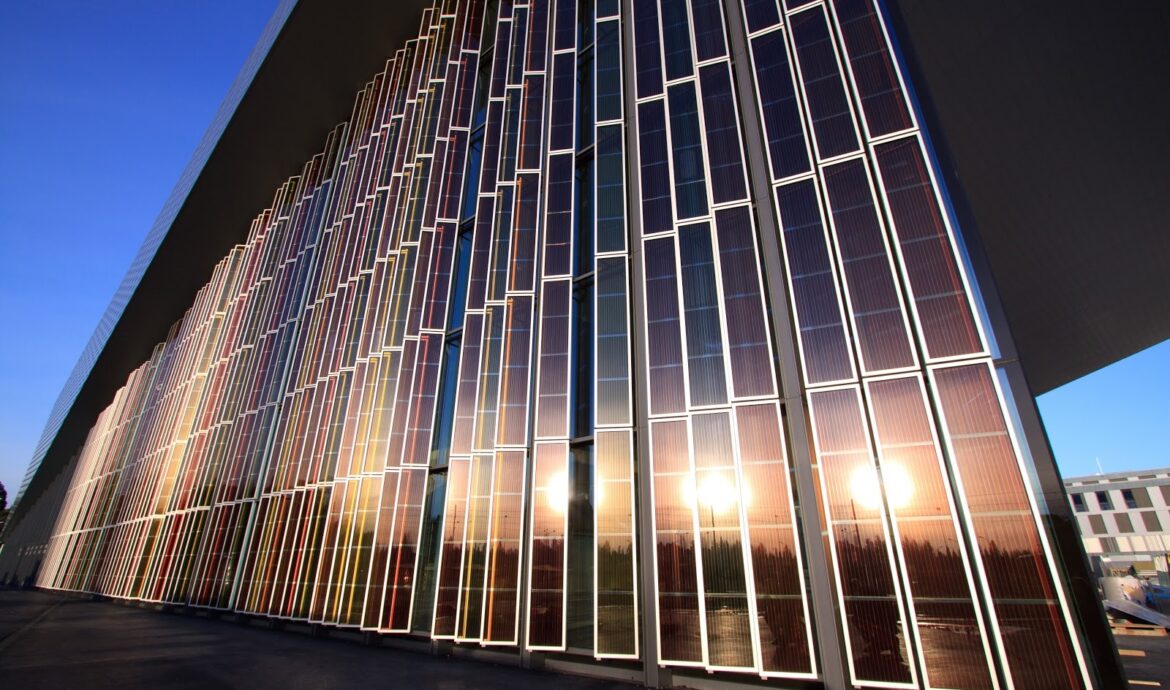
Photovoltaics on Buildings – Ugly and Expensive or an Opportunity for Creative Design?
On 01.02.2020 by Linus WalkerBy Linus Walker
Cover photo: Swiss Tech convention center with colored, semi-transparent BIPV facade. Source: Solaronix
The integration of solar energy technologies in buildings has been available for several decades. However, many buildings are still built without any PV or solar thermal collectors, which in my opinion is an intolerable situation.
Long ago, solar thermal and photovoltaics often affected the aesthetics of buildings negatively and were too expensive. This is still in people’s minds. In the last decade, however, thanks to major research efforts, the industry has made huge progress: integration quality has improved a lot while prices continue to decrease.
In this article, I show a selection of available integration technologies and discuss aspects of building-integrated photovoltaics (BIPV) that will make you look at it from a different perspective.
Opportunities and Barriers to Building-Integrated Photovoltaics
Why PV on buildings?
Switzerland and countries all over the world need additional renewable electricity production to deal with increasing electrification and the phase-out of nuclear power. BIPV are photovoltaic materials that replace conventional materials of a building envelope, such as the roof or the façade, and produce electricity from sunlight. Photovoltaic electricity production is noise-free and does not emit any local pollutants, which make PV a great choice to be installed on buildings. On the other hand, buildings are large electricity consumers. Installing PV near or on buildings makes sense. BIPV further has the advantage that no additional land use is required for electricity production.
Why not?
Local solar electricity production at your building, who would not want that?
Unfortunately, integrated PV on buildings is less accepted than one might expect. Speaking to architects and homeowners, I often hear that there are only ugly and too expensive BIPV products. Several studies show that I did not just talk to the wrong people. For example, a study by researchers from TU Delft investigated the perceived barriers to façade integration amongst professional planners. They found that “lack of product” and “economic reasons” were the most mentioned barriers. So, they are in line with the public perception I encounter.
While availability and cost barriers were real obstacles two decades ago, I claim that the current perception is largely based on mesofacts that are no longer true in actual BIPV design!
Existing Technologies for Aesthetic Integration
In this section, I show a selection of integration technologies that demonstrate the design freedom you get when building with BIPV. It is clear that all efforts to hide the photovoltaic modules with an additional layer will induce additional losses in electricity production and therefore decrease the energy output. These additional losses depend on color and pattern of the choice and lie in the range of 8-30%.
One technology that has been researched at EPFL and is now developed by a startup, is spectrally selective glass coating. It works by applying an atomic deposition to create a nanometer layer that causes light inferences resulting in colorful impressions. Basically, any PV type can be used at the back of the glass cover. The Copenhagen International School is shown as an example of this technology in Figure 1.
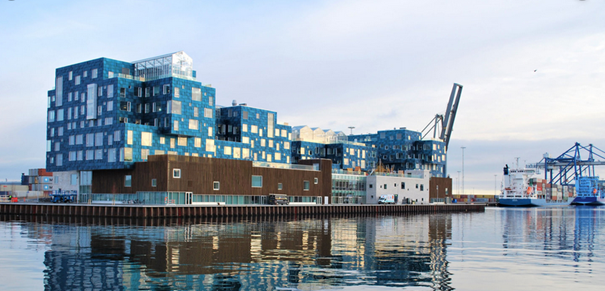
Figure 1: PV covered with spectrally selective glass coating. Copenhagen International School Credits: Kromatix by SwissINSO, façade by SolarLab
A CSEM spinoff produces colored modules by applying color filter films that let most of the light fraction pass, which is responsible for the photovoltaic effect but reflect parts of the visible light. This even allows designing building envelopes with white photovoltaic surfaces. Would you even have noticed the PV in Figure 2?
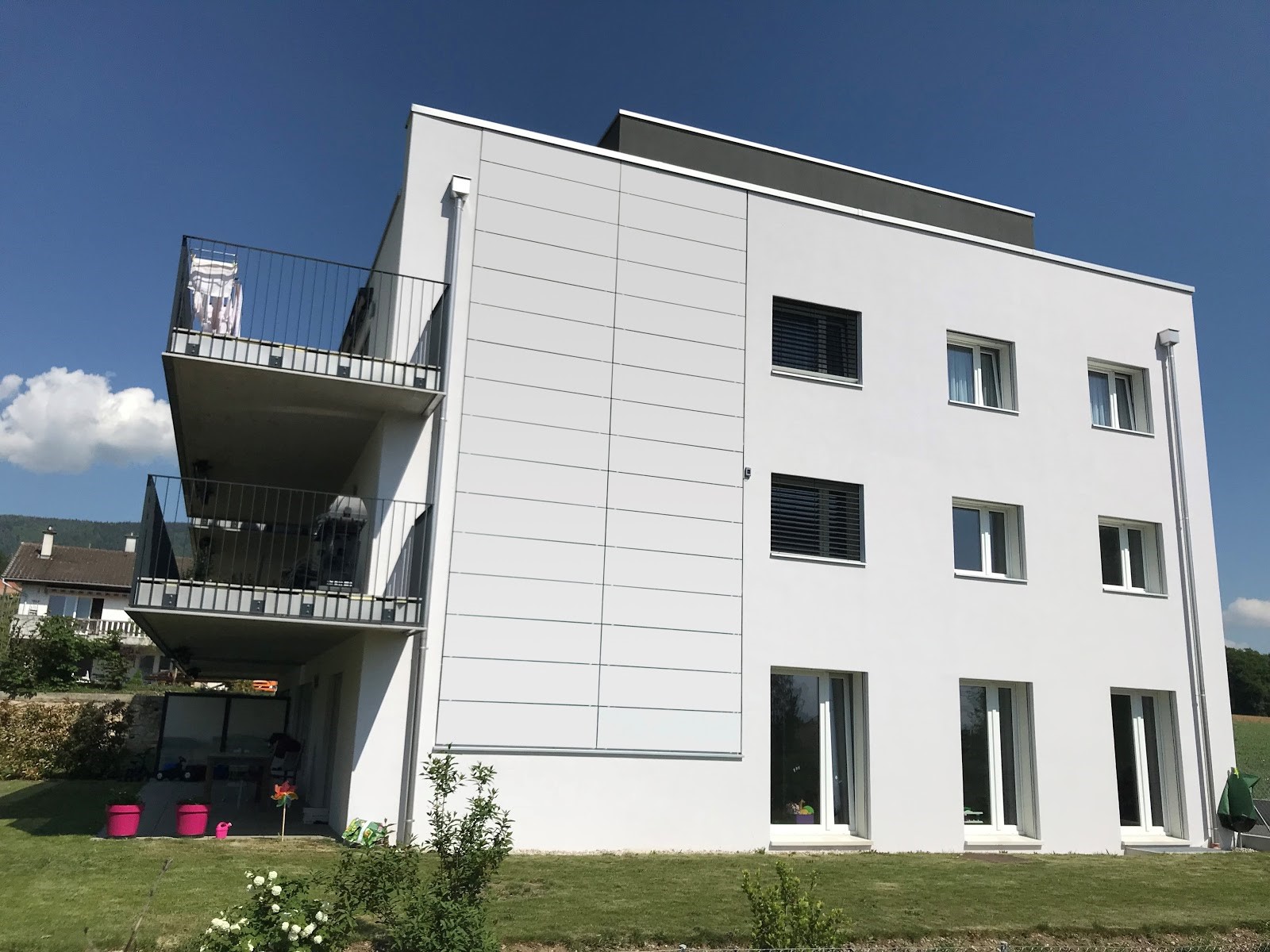
Figure 2: Demonstration of white PV façade next to conventional white plaster. © Solaxess
Another promising cover technology is researched and developed at HSLU. It incorporates digital glass prints that can be of almost any color. This technology also allows manufacturing artistic panels with printed motives. One example, that in my opinion proves the flexibility of this technology, is the solar modules depicting the cantonal flags of Switzerland shown in Figure 3.
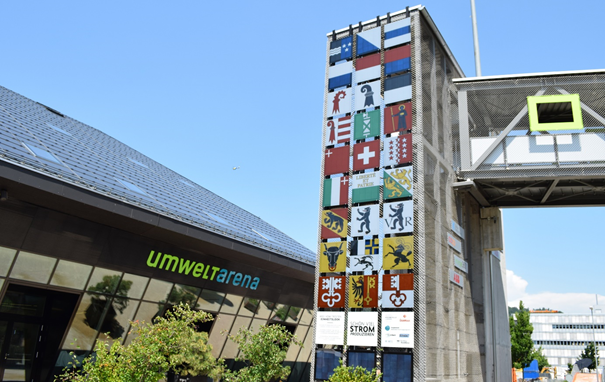
Figure 3: Electricity producing flags. Credits: Umwelt Arena Schweiz, Kompetenzzentrum für Nachhaltigkeit, www.umweltarena.ch
A further option is the use of colored cells. This is especially a thing for polycrystalline silicon cells or for dye-sensitized solar cells such as the Grätzel cell (see title Figure). Especially the latter seems promising but is still at the interface between research and market application.
Finally, a creative arrangement of the typical black and blue mono-crystalline panels can lead to pleasant aesthetic integration of photovoltaics. Examples hereof are the integrated roof of a traditional Swiss farmhouse (Figure 4) and the facade of a high-rise building in Basel (Figure 5). Even innovative approaches such as using PV for dynamic shading, which is investigated at ETHZ, are possible options.
Given all these design options, why do we keep on thinking about solar materials as obstacles? We could start seeing them as opportunities to explore and develop novel, innovative and aesthetic roofs and facades, instead.
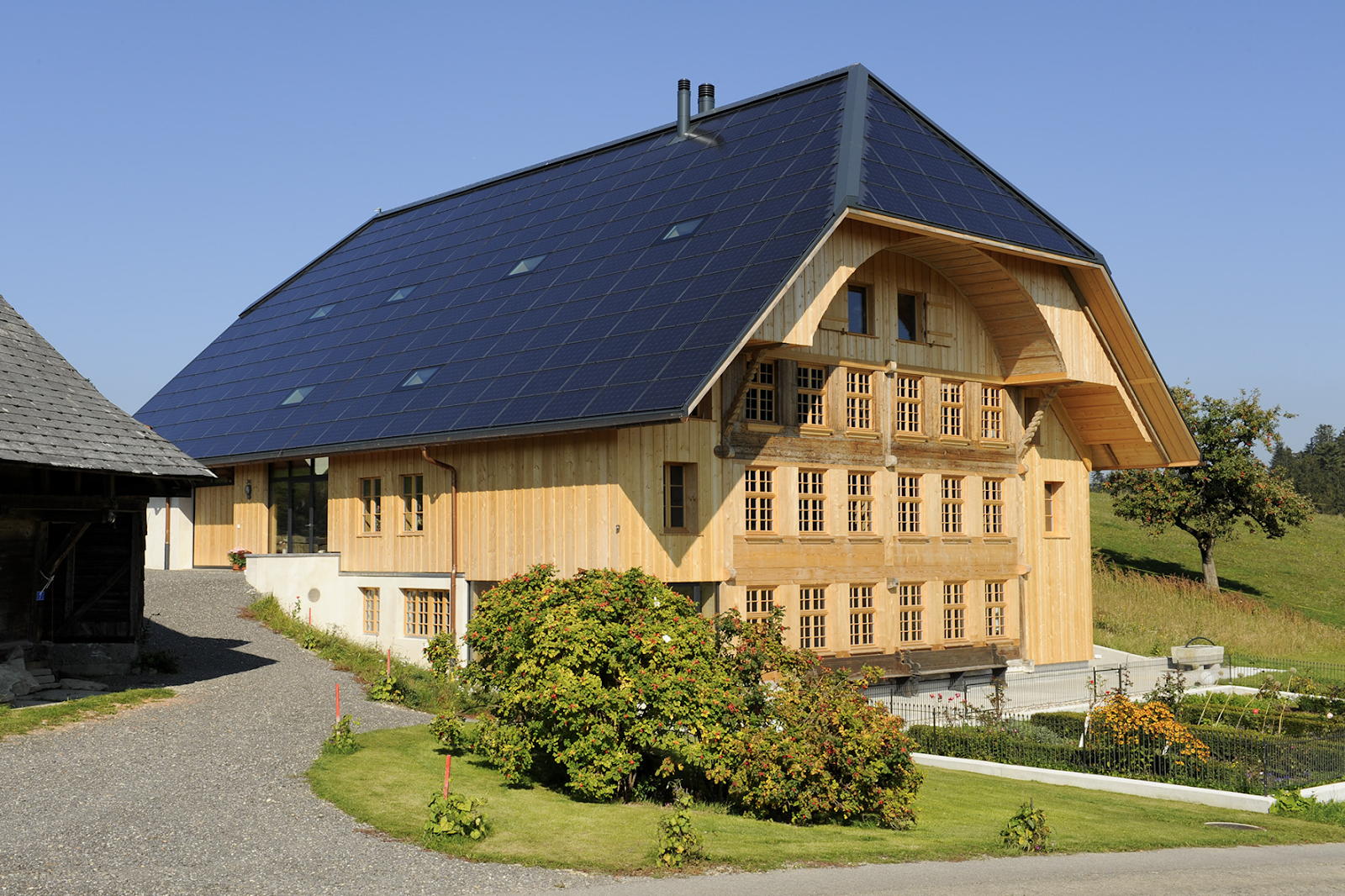
Figure 4: Konzept und Bau erneuerbare Energieversorgung des preisgekrönten Objekts: clevergie ag – Ihre Energiearchitekten für Beratung, Planung und Bau von erneuerbaren Energieanlagen rund um Strom, Wärme und Mobilität. (Translation: Concept and construction of renewable energy supply for the award-winning property: clevergie ag – Your energy architects for consulting, planning and construction of renewable energy plants for electricity, heat and mobility.)
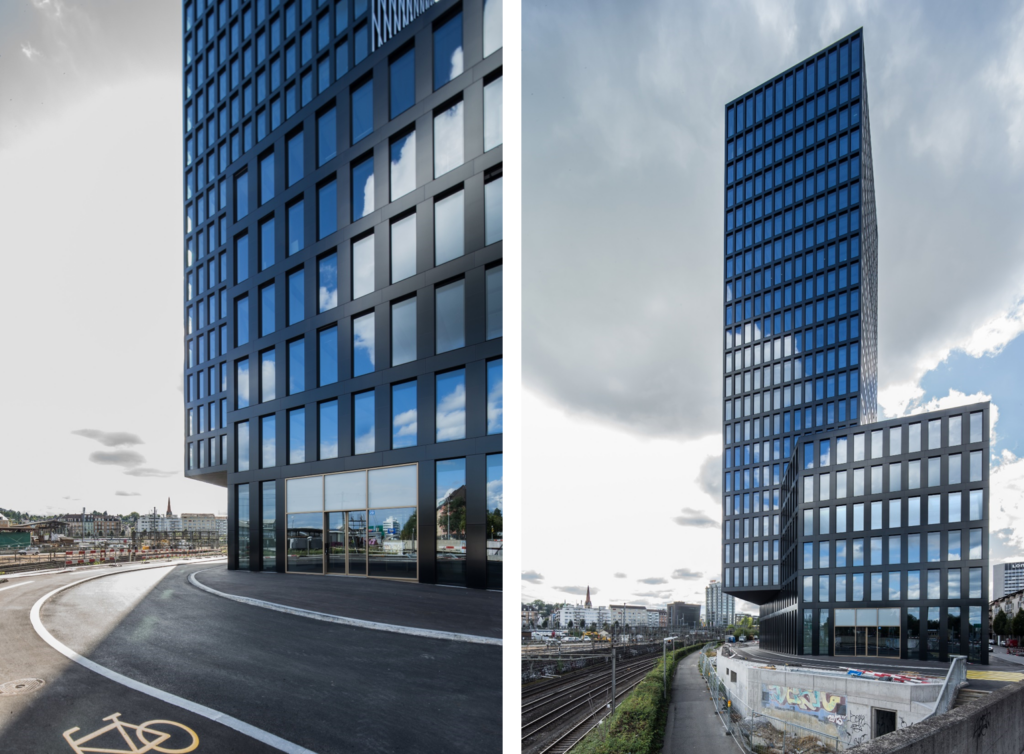
Figure 5: Grosspeter Tower in Basel. Showing a seemingless integration of PV modules into the facade of a high-rise building. Solar façade planning by energiebüro ag. ©Adriano Biondo
Cost of Building-Integrated Photovoltaics and the Role of the Architect and the Building Owner
Next to aesthetics, the cost of photovoltaic installations is often considered one of the main barriers to the diffusion of BIPV. Many European countries are currently decreasing their subsidies or feed-in tariffs but at the same time prices of photovoltaic installations are decreasing rapidly. For BIPV there are two main factors that need to be considered when talking about cost:
- BIPVs should be installed on a building when you build or renovate your roof or your façade anyway. In this way, you can “save” the cost for a standard envelope, such as for example roof tiles.
- Compared to a non-PV roof or façade, you can no longer only compare investment cost but you need to take a long-term perspective.
In fact, although the investment cost is definitely higher, you will also have revenue. After the additional cost has been recovered, you will basically have free electricity for the rest of the building envelope’s lifetime. The specific numbers depend a lot on the location and technical details of the project as well as on the electricity prices and feed-in tariffs. Examples for the payback time are as little as 7.5 years to 15 years for well-designed projects.
Finally, we need to discuss the roles of the building owner and the architect. Architects and planners try to keep the cost low for their clients. Often, this mostly means investment cost and not life cycle cost. Further, the information about BIPV products and possibilities do not seem to have arrived in every architectural office yet. So, I suggest every architect and (future) building owner to take a long-term perspective and get informed about the opportunities that BIPV technologies offer.
I would even go so far and state that every building that is built or renovated without considering photovoltaics is a significant, missed opportunity. Think about it, is the PV in the pictures I showed you before really an aesthetical issue? And wouldn’t you want to have a roof that pays you back over time?
INFO BOX
Here is a selection of informative links on building-integrated photovoltaics.
Solarchitecture: A collection of examples and construction details.
Sonnendach.ch: Here you can calculate the solar potential of your building envelope including local parameters such as sunlight irradiation and feed-in tariffs.
BIPV Status Report by SUPSI: Additional background information on available products, economic figures and current scientific and industrial progress.
Swissolar: Industry association for solar technologies
Keep up with the Energy Blog @ ETH Zurich on Twitter @eth_energy_blog.
Suggested citation: Walker, Linus. “Photovoltaics on Buildings – Ugly and Expensive or an Opportunity for Creative Design?”, Energy Blog @ ETH Zurich, ETH Zurich, February 1, 2020, https://blogt.ethz.ch/energy/building-integrated-photovoltaics/
If you are part of ETH Zurich, we invite you to contribute with your findings and your opinions to make this space a dynamic and relevant outlet for energy insights and debates. Find out how you can contribute and contact the editorial team here to pitch an article idea!

